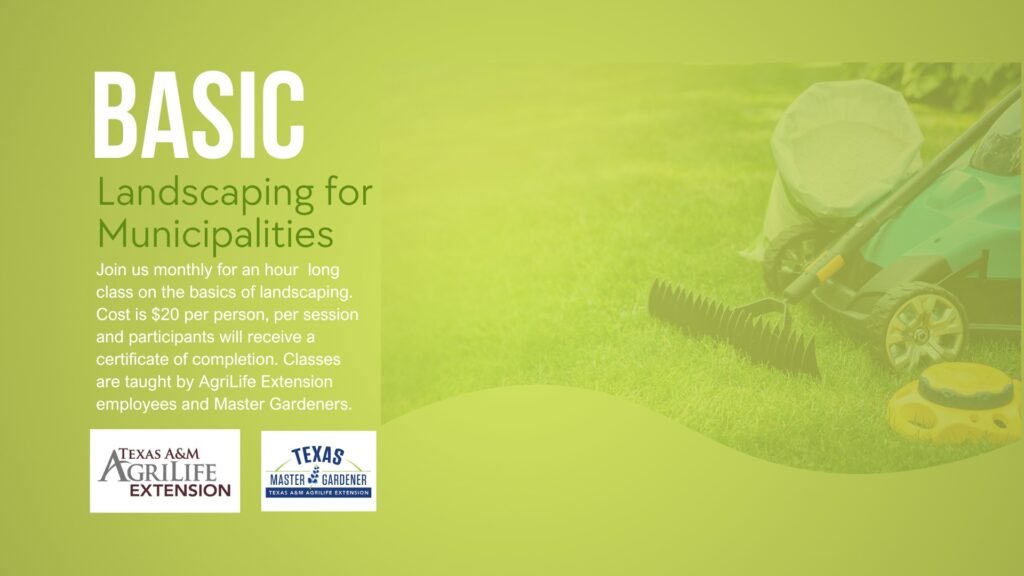Contents
- 1 Table of Contents
- 1.1 What is a Mowing Map?
- 1.2 Mowing Map at Texas A&M University (TAMU)
- 1.3 Understanding TAMU’s Mowing Schedule
- 1.4 The Importance of the Mowing Map at TAMU
- 1.5 FAQ: Mowing Map and Grounds Maintenance at TAMU
- 1.5.1 1. How often is the mowing map updated?
- 1.5.2 2. Can students or staff request special mowing services?
- 1.5.3 3. How does the mowing schedule accommodate campus events?
- 1.5.4 4. Are environmentally sensitive areas mowed differently?
- 1.5.5 5. How does weather affect the mowing schedule?
- 1.5.6 6. What happens if an area is missed during its scheduled mowing?
- 1.6 Conclusion
Table of Contents
Mowing Map Tamu Texas A&M University (TAMU), one of the largest universities in the United States, is not only known for its academic excellence but also for its sprawling, meticulously maintained campus. With over 5,200 acres, managing and maintaining the landscape, particularly the lawns, is a significant undertaking. The Mowing Map at TAMU plays a critical role in the maintenance strategy, ensuring the campus remains beautiful and inviting for students, faculty, and visitors alike.
In this article, we will explore the mowing map at TAMU, understand how it operates, its importance to campus maintenance, and answer key questions about the mowing processes and schedules.
What is a Mowing Map?
Definition of a Mowing Map
A mowing map is essentially a well-organized, color-coded plan that outlines which areas of a property, such as a university campus, are designated for regular mowing and landscaping services. The map usually divides the campus into zones or sections, providing clarity on when and where mowing will occur.
At Texas A&M University, the mowing map serves as a guiding tool for the Grounds Maintenance department, helping to streamline operations and maintain the campus’s beauty. Given the vast size of the TAMU campus, the mowing map is vital for managing both the high-traffic areas and the more remote, lesser-used parts of the university grounds.
Key Elements of a Mowing Map
A typical mowing map includes the following elements:
- Color-coded areas: These represent specific zones on the campus, indicating the frequency of mowing or special instructions for landscaping.
- Landmarks and building labels: To make the map more accessible and useful, key campus landmarks such as buildings, parking lots, and pathways are labeled for easy identification.
- Mowing schedule: Different zones are assigned specific days for mowing based on usage, foot traffic, and priority. This allows for better resource allocation and minimizes disruption.
The Role of Technology in Creating Mowing Maps
While a mowing map might seem like a simple tool, its creation involves sophisticated Geographic Information Systems (GIS) and other landscape management software. TAMU’s Grounds Maintenance team employs modern mapping technologies to create accurate mowing maps, ensuring efficient use of equipment and resources while avoiding areas with special conditions or conservation needs.
Mowing Map at Texas A&M University (TAMU)
Overview of TAMU’s Campus Grounds
Texas A&M University’s College Station campus spans more than 5,200 acres, making it one of the largest public universities in the United States by land area. The vast grounds include academic buildings, student dormitories, administrative offices, recreational spaces, athletic fields, and natural preserves.
The diversity of the landscape means that different parts of the campus require different maintenance techniques and schedules. High-traffic areas near classrooms, sports facilities, and dormitories demand more frequent mowing, while more remote areas or nature preserves may only need periodic maintenance to ensure ecological balance.
Key Zones on TAMU’s Mowing Map
- Academic Core
- Description: This is the heart of the university, encompassing most of the academic buildings and main quad areas. It’s the most visited part of the campus.
- Mowing Frequency: Weekly or bi-weekly, depending on the season.
- Special Considerations: Some areas may require additional care, including trimming around monuments and statues.
- Recreational Fields and Athletic Areas
- Description: This zone includes the sports complexes, including Kyle Field, intramural fields, and other recreational areas.
- Mowing Frequency: Weekly, especially during the athletic season.
- Special Considerations: Athletic fields often require specialized equipment to ensure proper grass length for specific sports.
- Residential Halls and Dormitories
- Description: Areas surrounding student dormitories and apartment complexes.
- Mowing Frequency: Bi-weekly.
- Special Considerations: These areas may also require attention to landscaping features, such as trees, shrubs, and flower beds.
- Parking Lots and Surrounding Areas
- Description: Large parking lots on the TAMU campus, including nearby green spaces.
- Mowing Frequency: Every two weeks.
- Special Considerations: Safety is a priority in these zones to avoid debris or obstacles for vehicles.
- Natural Preserves and Remote Areas
- Description: These include TAMU’s ecological research areas and less-frequented parts of the campus.
- Mowing Frequency: As needed, with a focus on preserving natural habitats.
- Special Considerations: These areas are typically mowed less frequently, often for ecological reasons, such as preserving habitats for wildlife.
Understanding TAMU’s Mowing Schedule
Seasonal Considerations
The mowing schedule at Texas A&M University is heavily influenced by the changing seasons, with higher mowing frequencies in the warmer months and less frequent maintenance in colder months. Texas, being a southern state, experiences long, hot summers, and shorter, milder winters, which means the campus lawns grow faster during late spring, summer, and early fall.

The key mowing seasons are:
- Spring: With rains and increasing temperatures, lawns experience rapid growth. Mowing is conducted more frequently, typically on a weekly basis, to maintain a tidy campus.
- Summer: Texas summers can be hot and dry. Even though the grass grows less quickly due to heat stress, regular watering and care are given to ensure lawns stay lush and green. Mowing usually takes place bi-weekly.
- Fall: As temperatures cool, mowing frequency remains steady, but may reduce slightly in preparation for winter dormancy of the grass.
- Winter: Grass growth slows considerably, so mowing is reduced to as-needed basis, with special attention to fallen leaves and winter debris.
Special Events and Adjustments
Texas A&M is home to many major events, including football games at Kyle Field, graduation ceremonies, and various community gatherings. During these high-profile times, the Grounds Maintenance team makes adjustments to the regular mowing schedule, prioritizing key areas to ensure they are pristine and ready for visitors.
For instance, during the football season, the areas around Kyle Field and other athletic facilities receive increased attention. Similarly, for graduations and homecoming, additional landscaping and maintenance efforts are put in place to enhance the visual appeal of the campus.
Mowing Equipment and Techniques Used
TAMU’s Grounds Maintenance team uses a variety of specialized equipment for different areas on the campus, ranging from ride-on mowers for large fields to push mowers for smaller, more delicate areas.
- Ride-on Mowers: Used for large, open areas like the sports fields and general campus lawns. These mowers allow for faster coverage of large areas.
- Push Mowers: Ideal for areas near buildings or in tight spaces where precision is key.
- Trimmers and Edgers: These are used for precision work around flower beds, sidewalks, and monuments, ensuring a neat and well-defined edge to grassy areas.
The Importance of the Mowing Map at TAMU
Maintaining Aesthetic Appeal
A well-maintained lawn contributes significantly to the overall look and feel of Texas A&M University. The campus is frequently visited by prospective students, alumni, and public figures. A carefully planned mowing map ensures that high-traffic areas remain pristine at all times, enhancing the aesthetic appeal of the university.
Safety Considerations
Beyond aesthetics, the mowing map plays a critical role in maintaining safety on campus. Overgrown lawns and weeds can create tripping hazards, reduce visibility on pathways, and even harbor pests. The consistent mowing schedule ensures that the grounds are kept in a safe and accessible state.
Environmental and Ecological Balance
TAMU’s campus includes several natural preserves and areas where ecological balance is crucial. The mowing map allows the Grounds Maintenance team to avoid over-mowing in these sensitive areas. Instead, these regions are maintained on an as-needed basis, ensuring the protection of wildlife habitats and the preservation of native plant species.
FAQ: Mowing Map and Grounds Maintenance at TAMU
1. How often is the mowing map updated?
The mowing map is updated seasonally or as needed based on campus events, construction projects, and other changes to the landscape. Major updates typically happen at the beginning of each semester.
2. Can students or staff request special mowing services?
Yes, students, faculty, or staff can submit requests to the Grounds Maintenance team for special mowing or landscaping services, especially in cases where specific areas need attention for an event or safety reasons.
3. How does the mowing schedule accommodate campus events?
During high-profile events like football games or graduation ceremonies, the mowing schedule is adjusted to prioritize areas where events will take place. This ensures that the grounds are in top condition for visitors.
4. Are environmentally sensitive areas mowed differently?
Yes, areas that are part of ecological research or conservation efforts are mowed less frequently and with care. The university aims to balance aesthetics with environmental stewardship, ensuring that natural habitats are preserved.
5. How does weather affect the mowing schedule?
Weather plays a significant role in determining the mowing schedule. During periods of heavy rain or extreme heat, the frequency and timing of mowing may be adjusted to ensure both the safety of the Grounds Maintenance team and the health of the grass.
6. What happens if an area is missed during its scheduled mowing?
If an area is missed during its scheduled mowing, it will typically be prioritized for the next available day. The Grounds Maintenance team strives to stick to the schedule but can occasionally adjust due to weather or equipment issues.
Conclusion
Mowing Map Tamu The mowing map at Texas A&M University plays an essential role in the overall maintenance of the campus, helping ensure that it remains a safe, beautiful, and environmentally balanced space. By dividing the campus into key zones, creating a dynamic mowing schedule, and using state-of-the-art equipment, the Grounds Maintenance team keeps the lawns well-groomed year-round. The mowing map is not only a logistical tool but a reflection of TAMU’s commitment to excellence in both academics and campus aesthetics.
Whether you’re a student, faculty member, or visitor, the next time you walk across the neatly trimmed lawns of TAMU, you’ll know that behind every blade of grass lies a carefully planned strategy guided by the mowing map!





